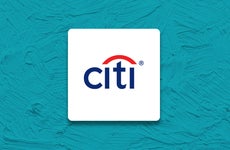7 signs a bank isn’t the right one for you

The Bankrate promise
At Bankrate we strive to help you make smarter financial decisions. While we adhere to strict , this post may contain references to products from our partners. Here's an explanation for .
The coronavirus pandemic has forced businesses across the world to adapt to new ways of operating. When it comes to the banking industry, however, the increased reliance on digital services has left some banks scrambling to improve their offerings.
In fact, the J.D. Power 2020 U.S. Retail Banking Satisfaction Study found that customer satisfaction has been on the decline, citing the inability for banks to make a smooth transition to digital banking as a main source of frustration.
There are many options available when choosing a bank. It’s important to consider the features and services that are important to you.
But in order to narrow down your choices, it may be valuable to determine which financial institutions definitely do not meet your needs and eliminate them as an option.
If you’ve been thinking about switching banks or opening a new account elsewhere, here are some of the key signs to watch for that may signal a bank isn’t right for you.
1. It requires a minimum balance you can’t afford
A dead giveaway that a bank isn’t the right one for you is the inability to afford it or make it worth your while. There’s plenty of banks that don’t require a minimum balance, so don’t be afraid to shop around banks for checking accounts.
This is particularly true for savings accounts, but also for checking. The accounts that require a high balance typically offer a more competitive yield on your savings, but if you can’t reach that then you’re just losing out on interest you could be earning elsewhere.
2. Funds are not easily accessible
These days, many consumers are opting for contactless payment methods and avoiding cash altogether as a result of the pandemic. However, there’s always that one time when you need cash, and an ATM is an easy way to get that.
Out-of-network fees are a pain, but what’s worse is not having access to cash when you’re in a crunch. This is a common issue with online banks, which may not offer a debit card or ATM access. While these types of accounts can be great for offering higher yields, you’ll likely want to have another account (or maybe a few) that provides access to a network of ATMs or even an in-person branch for the times when you do need cold hard cash.
There’s nothing wrong with having multiple accounts. In fact, it’s a strategy that some employ to help control spending and keep their saving goals on track.
3. There are costly service fees
Getting charged to store your money at a bank? No thanks.
Plenty of banks don’t charge pricey service or account fees, so there’s no reason to settle for one that wants to nickel and dime you for keeping your money safe.
Always read the fine print before opening a new account, so that you don’t get stuck with any surprise charges.
4. Features and services are limited
We’ve been living in a digital world for quite some time now, which means there’s really no excuse for your bank not to offer a great mobile or digital experience.
If your bank doesn’t offer you the simple ability to say, check your balance or deposit a check, then it might be time to move on.
Other key features of mobile banking to look for include:
- Saving and budgeting tools
- Payment services (peer-to-peer or automated bill pay)
- Customizable security features
- A digital wallet
While some folks prefer the in-person service, you can’t deny the convenience of having access to your bank account at the touch of a button. This has also proven to be particularly handy in the age of coronavirus where many bank branches were forced to close their doors due to health concerns.
5. You don’t feel like a valued customer
If you’ve had an issue with your existing bank and are generally unhappy with how they handled it, then it’s probably time to break things off.
Money’s already stressful enough, don’t let your bank stress you out even more.
Good customer service is available 24/7 and is more than just a phone number. Beyond an around the clock customer service line, you should look to see if they offer any virtual assistance as this usually speeds things along and that means less worrying. The bottom line is that banks should be able to provide you answers and resolve issues quickly.
6. It’s not FDIC or NCUA insured
If your bank is not Federal Deposit Insurance Corporation (FDIC) insured, it’s time to go.
The FDIC protects you and your money in the case that the bank you do business with fails and has to close its doors. This protection was added after the Great Depression when many banks failed and a number of Americans lost their savings, and couldn’t do anything about it.
Bank failures aren’t very common these days, but they can still happen, which is why you always want to make sure an institution is FDIC insured before putting any money into an account. The FDIC insures up to $250,000 per depositor, per FDIC-insured bank, per ownership category.
If you do your banking at a credit union, then your money is insured by the National Credit Union Administration (NCUA). Like the FDIC, the NCUA insures up to $250,000 per depositor, per account type, per institution.
7. The savings rates aren’t competitive
Like we mentioned previously, there’s nothing wrong with having multiple accounts. In fact, it might help with your overall spending and saving.
When it comes to saving right now, rates are quite low. However, that doesn’t mean you should settle — there are still higher savings account rates available closer to 1 percent APY, which is considered high these days.
If you’re earning less than that, then it’s time to shop around and move your savings.
Bottom line
As the saying goes, “time is money” and time wasted is money lost. So it quite literally pays to be selective about who you bank with.
Look beyond the highest rates and decide on what features are most important to you. If you do this, you’ll likely be a lot more satisfied with your bank and that’s one less thing to worry about — which is always something to celebrate.
Learn more:
Related Articles



